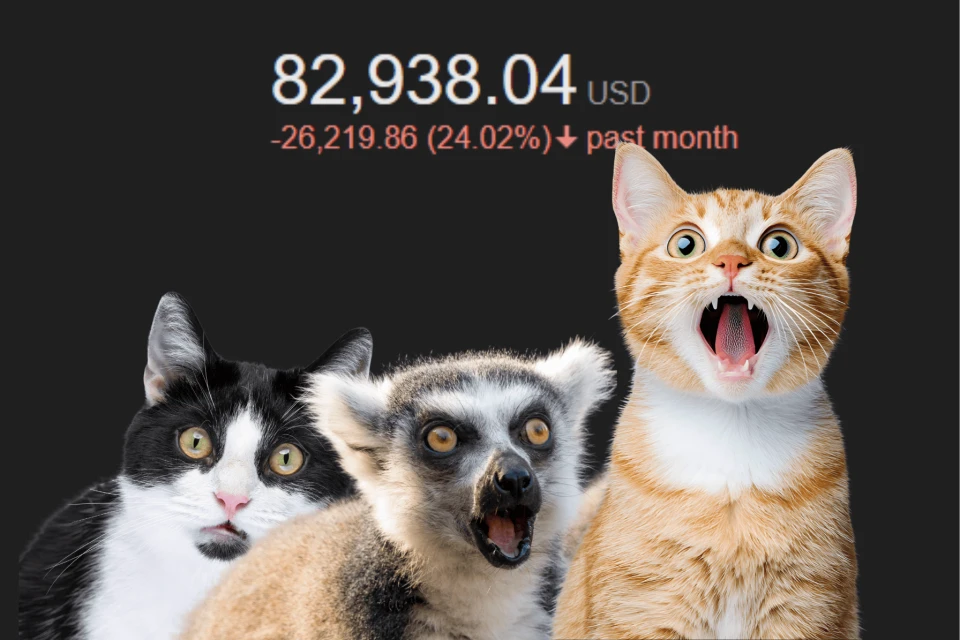The cryptocurrency market has wiped out more than $1 trillion in paper wealth since early October, with bitcoin down about one-third from its record, and a lot of traders wondering whether this is just another correction or the start of something more serious.
In a little over six weeks, total crypto market capitalization has dropped from roughly $4.2 trillion to under $3 trillion. Bitcoin, the largest digital asset, has fallen from an all-time high above $126,000 on October 6 to around $86,000, a slide of about 31 percent that has pulled the rest of the market lower alongside it. For anyone who has been treating bitcoin as a one-way trade, this is a harsh reminder that volatility never left.
The turn began with a violent unwind in derivatives. On October 10, a cascade of liquidations in leveraged positions hit crypto markets, triggering what analysts described as the largest bitcoin liquidation event on record. In a matter of minutes, billions of dollars in highly leveraged bets were closed out as prices slipped, margin thresholds were breached, and automatic selling fed on itself. The result was not just a bad day but a structural shock that left the market more fragile.

Since then, the selling has not been confined to short-term gamblers. Research cited by Business Insider, drawing on data from crypto asset manager 21Shares, estimates that long-term holders have offloaded about 42,000 bitcoin in November, worth roughly $4 billion at recent prices. Spot bitcoin exchange-traded funds have logged three consecutive weeks of outflows, including roughly $866 million in redemptions on a single day, signaling that even vehicles built for traditional investors are seeing money head for the exits.
Macro conditions are amplifying the stress. Shifting expectations around Federal Reserve policy have dented the bull case for risk assets at the same time that crypto was digesting its own internal leverage shock. When markets start to price in fewer or later rate cuts, anything that trades like a high-growth, high-risk asset tends to get repriced. Bitcoin has not been an exception.
For people who live in charts, dashboards, and code, this drawdown is a case study in how leverage, market structure, and macro signals interact. If you are learning how crypto actually works under the hood rather than just watching the price, this is the kind of episode you can dissect with the same tools you might use while working through blockchain applications and use cases. It is a real-world example of how quickly liquidity can evaporate when too many players lean in the same direction.
Community sentiment, unsurprisingly, has turned sour. Across social platforms, many small investors say they are tired of watching violent price swings while feeling like whales and funds can move the market at will. Others argue that crypto still does not justify its valuations because day-to-day usage has not caught up with the scale of speculative capital. Whether you agree or not, it is clear that the story most people are telling about crypto right now is less about innovation and more about imbalance.
Developers and learners who are serious about the space should treat that skepticism as a signal. Building something useful, whether a protocol, an app, or a trading strategy, requires understanding both the technology and the market that surrounds it. Resources like our community guides to the best cryptocurrency and blockchain tutorials or its overview of crypto arbitrage bots can help you move beyond price watching and into the mechanics of how these systems behave when stress hits.
Analysts quoted in the same Business Insider report suggest that bitcoin may be nearing a local bottom and could see a reflexive bounce as stretched positions are cleared out and funding rates normalize. Satraj Bambra, CEO of hybrid exchange Rails, summed up the current mood: the burden of proof now sits with the bulls. A sustainable recovery would need buyers who are willing to step in with real conviction, not just another round of highly leveraged momentum trades.
For now, the only safe conclusion is that this is a live stress test of the entire crypto complex. A $1 trillion drawdown in paper value is not just a headline number. It is a filter that will separate people who were here for a quick upside from those who want to understand and build for the long term. If you are in the second group, this is the moment to study what happened, tighten your risk management, and decide what you think crypto is actually for, beyond the next bull run.
